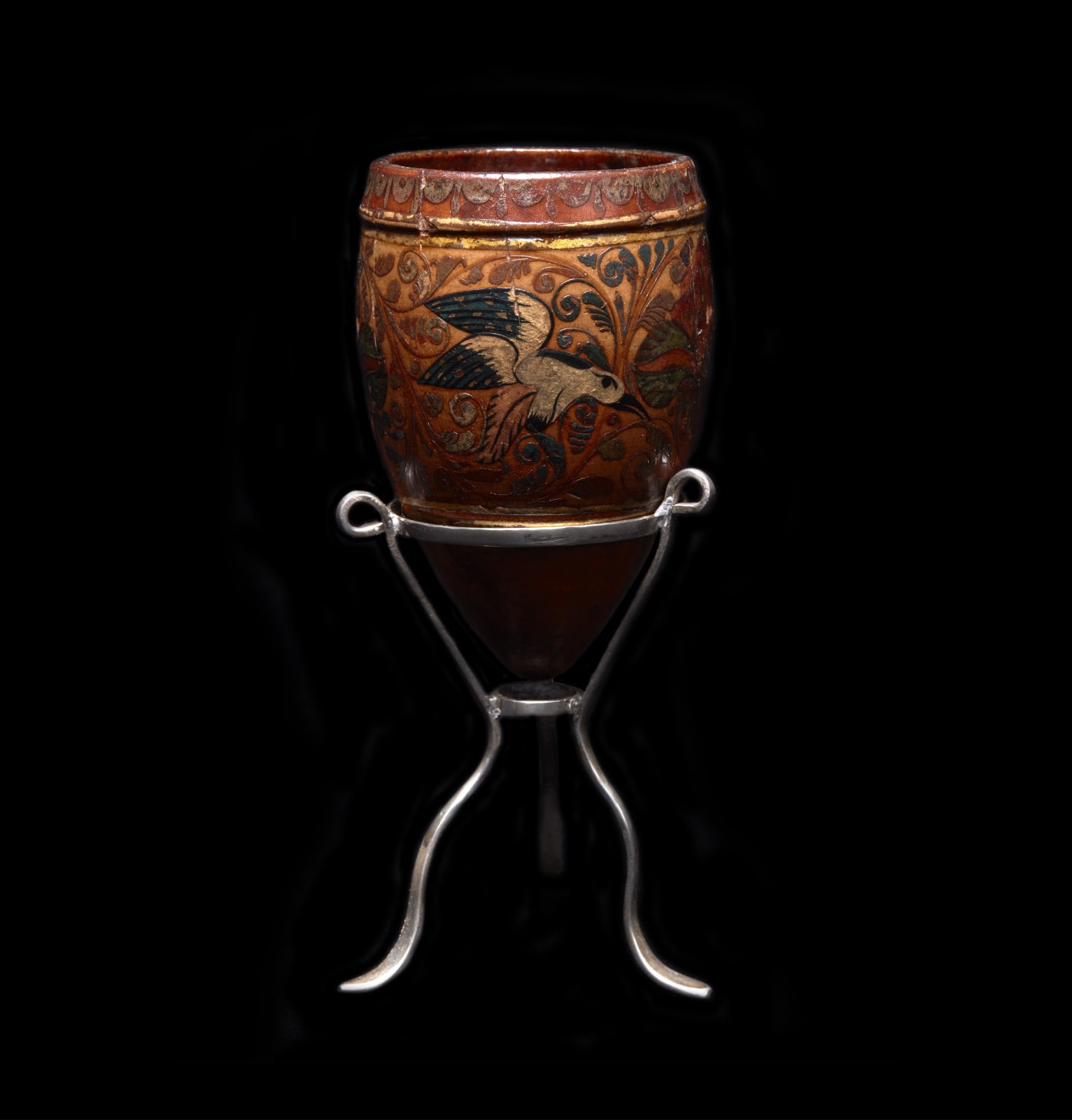BARNIZ DE PASTO, JICARA
In its origin, the jícara was simply an indigenous vessel made of hollow pumpkins or of the fruit of the güira or jícaro, a very abundant tree in Central America. It was used to drink pozole (a drink of cocoa and corn) or other liquids, and once the Spaniards arrived in America began to copy certain native customs, the Nahuatl word xicalli derived in jícara and the humble pumpkin in something quite more elegant, like carved coconut shells or decorated crockery.
What lasted was the habit of using a small container without handles to drink the chocolate, which by then (first decades of the 17th century) had already been adapted to European taste by adding sugar and spices which began to arouse passions in court.
This special Jicara is decorated with the technique of pasto varnish makes reference to a period of transition between both cultures where Native American and Spanish elements manage to merge to give birth to these small works of art richly decorated using resins and natural pigments as well as minerals such as Gold and Silver.
